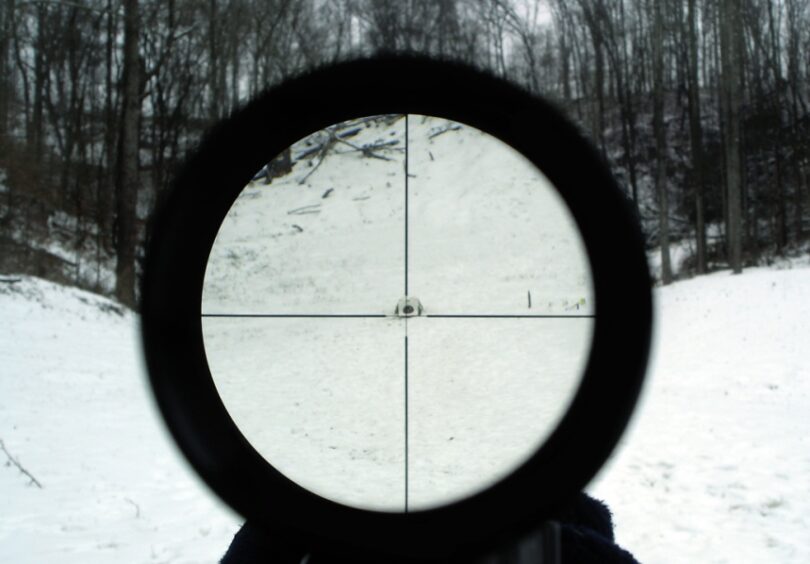

Do you risk a shot or start closer? I find it generally pays to take that first poke from about 30 yards where you’re sure to hit paper. Sometimes bore-sighting is good enough to put you on paper at 100 yards, sometimes it’s not. But don’t assume every scope’s click adjustment movement will be dead on.

Understand what each turret click means when adjusting scope reticle for shifting point-of-impact at your sight-in distance. Barrel and scope should now be pointing to the same place. Now, without moving the rifle, turn the turrets until the reticle centers over the bull’s-eye. Peer down the barrel and adjust the rifle to visually center a small bull’s-eye at about 30 yards. (A cardboard box with notches on two top edges to hold the rifle works well in a pinch. The trick is to mount the rifle in a vice or cradle so that it doesn’t move easily. Eyeballing might sound rather coarse, but it’s cheap and it works. Use a mechanical or laser bore-sighter or just eyeball it. Bore Sighting Isn’t Boringīefore you fire that first shot, bore-sight the gun. That’s a pity, especially when you can sight-in a scoped rifle with as few as two shots. I’ve seen people burn through 20 rounds, throw up their hands in frustration and go home, no closer to dropping bullets where aimed than when they started. Some poor guy bangs round after round downrange, cussing and twirling his adjustment dials in confusion as shots scatter over a sheet of paper the size of a barn. If your rifle puts subsequent shots an inch or two higher or lower, you’ll probably still be on target with quarry as large as deer inside of 250 yards. Learn More › Your best shot is most often your first shot, so zero for a cold barrel. We may earn revenue from the products available on this page and participate in affiliate programs.


 0 kommentar(er)
0 kommentar(er)
